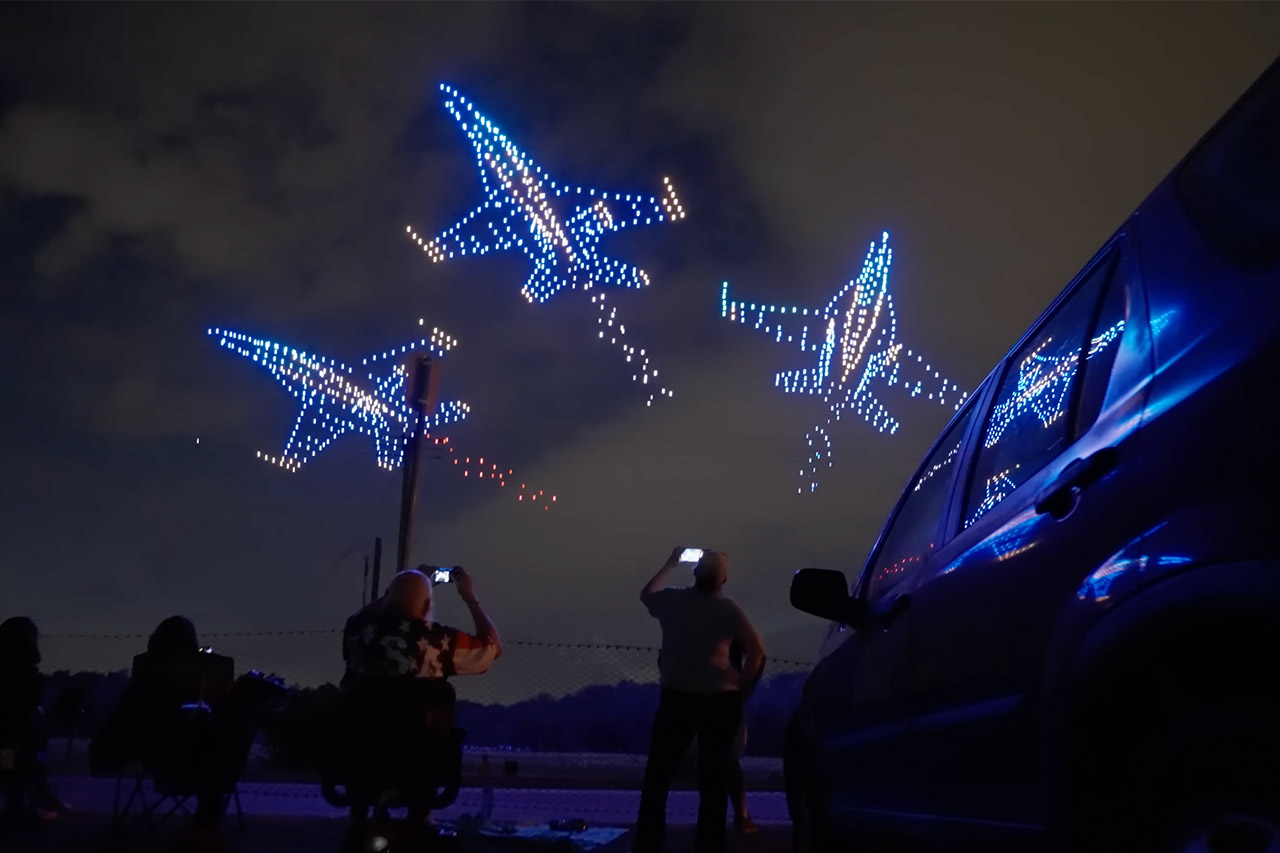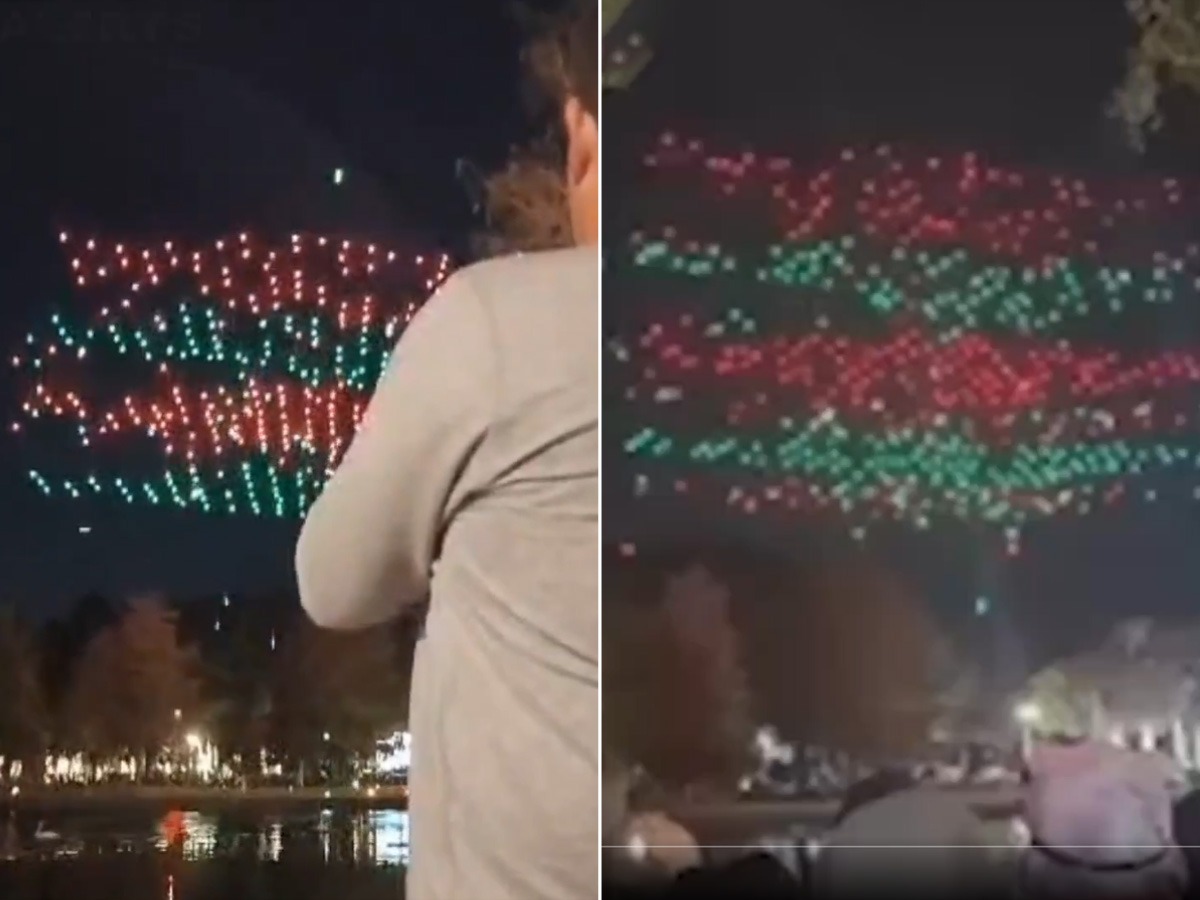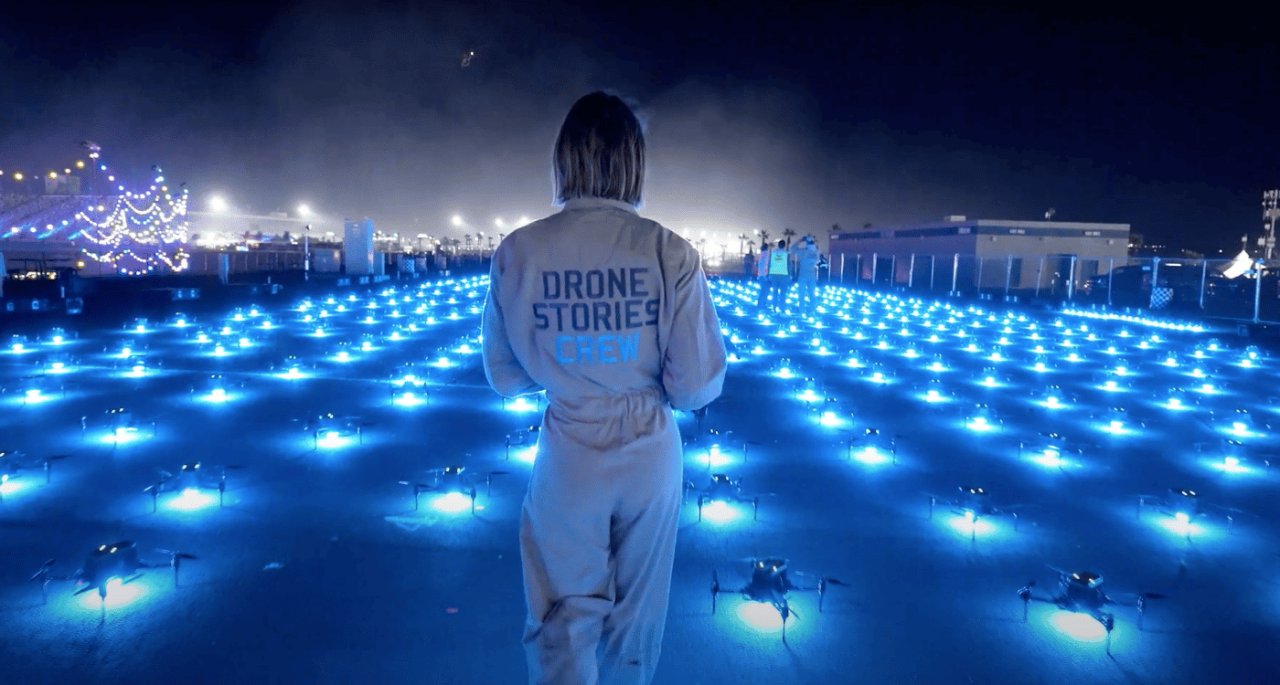Florida Drone Shows: Imagine breathtaking aerial displays illuminating Florida’s stunning coastlines and vibrant cities. This guide delves into the captivating world of drone shows in the Sunshine State, exploring everything from the regulatory landscape and prime locations to the economic impact and creative design elements that make these spectacles so unique. We’ll uncover the intricate details of permitting, the logistical considerations of various venues, and the technological advancements shaping the future of this rapidly evolving entertainment sector.
From choreographed light shows dancing across iconic skylines to innovative advertising displays reaching vast audiences, we’ll examine the diverse types of drone shows taking flight across Florida. We’ll also discuss the crucial safety and security protocols ensuring these awe-inspiring events are both spectacular and safe. Prepare to be inspired by the artistry, technology, and economic potential of Florida’s dynamic drone show industry.
Florida boasts a vibrant entertainment scene, and a unique aspect of this is the burgeoning popularity of drone shows. These spectacular displays of coordinated aerial artistry are becoming increasingly sophisticated, and for those interested in learning more about the current offerings, you can check out details on the latest events at florida drone show. The innovative choreography and technological advancements make these Florida drone shows a must-see for both residents and tourists alike.
Florida Drone Show Regulations and Permits
Organizing a drone show in Florida requires navigating a complex web of regulations and obtaining the necessary permits. These vary significantly depending on the location, scale, and type of show. Understanding these requirements is crucial for a successful and legal event.
Specific Regulations Governing Drone Shows in Florida
Florida, like other states, adheres to Federal Aviation Administration (FAA) regulations concerning drone operation. These include restrictions on flight altitude, distance from airports, and operational hours. Additionally, Florida may have specific state or local ordinances impacting drone shows, particularly regarding airspace restrictions near sensitive areas like military installations or airports. It’s crucial to consult both federal and state regulations, along with any local ordinances.
Permitting Process for Organizing a Drone Show
The permitting process involves submitting a detailed application to the relevant authorities, which could include the FAA, local county government, and potentially park management if the show is in a public park or national park. Applications typically require information about the show’s location, date, time, planned flight path, number of drones, and safety protocols. Coastal areas often have additional permitting requirements related to environmental protection and potential impacts on wildlife.
Comparison of Permitting Requirements with Other States
While the FAA regulations apply nationwide, individual states may have differing local ordinances impacting drone operations. Some states have more streamlined permitting processes than others. Florida’s permitting process is generally considered to be relatively detailed, often requiring multiple approvals from different agencies, compared to states with more centralized systems. The specific requirements vary significantly based on the location within Florida itself.
Permit Fees, Application Deadlines, and Required Documentation
| County | Permit Fee | Application Deadline | Required Documentation |
|---|---|---|---|
| Miami-Dade | Varies based on show size and location; expect several hundred to several thousand dollars. | Typically 60-90 days prior to the event. | Detailed flight plan, insurance certificate, pilot qualifications, site survey, environmental impact assessment (if applicable). |
| Orange | Varies; contact the county for specific fees. | 60-90 days prior. | Similar to Miami-Dade; specifics may be found on the county website. |
| Broward | Varies; contact the county for specific fees. | 60-90 days prior. | Similar to Miami-Dade; specifics may be found on the county website. |
| Other Counties | Contact the specific county’s permitting office. | Varies. | Contact the specific county’s permitting office. |
Popular Florida Drone Show Locations
Florida offers several spectacular locations ideal for drone shows, each possessing unique visual elements and logistical considerations.
Five Popular Locations for Drone Shows
Choosing a location depends on factors like audience capacity, visual appeal, accessibility, and permit restrictions. The following locations represent a diverse range of options.
| Location | Suitability | Advantages | Disadvantages |
|---|---|---|---|
| Walt Disney World Resort (Orlando) | Large-scale shows, established infrastructure. | High audience capacity, existing infrastructure, potential for sponsorships. | Strict permitting requirements, potential for airspace restrictions. |
| South Beach (Miami) | Unique cityscape, beach backdrop. | Iconic backdrop, large potential audience, high tourism. | Complex airspace, potential for weather disruptions, high permit fees. |
| Everglades National Park | Natural beauty, unique landscape. | Stunning natural backdrop, opportunity for eco-tourism promotion. | Strict environmental regulations, limited audience capacity, potential for wildlife interference. |
| Clearwater Beach | Beachfront setting, sunset views. | Beautiful setting, large potential audience. | Potential for weather disruptions, need for careful consideration of wildlife. |
| St. Augustine | Historic city, unique architecture. | Historic setting, potential for showcasing history, moderate audience capacity. | Airspace restrictions around historic sites, potential for limited audience capacity. |
Types of Drone Shows in Florida
Drone shows in Florida can vary widely in style, complexity, and purpose. The choice depends on the budget, target audience, and desired impact.
Elaboration on Different Types of Drone Shows
- Choreographed Shows: These involve intricate formations and movements, often telling a story or conveying a theme. Think synchronized patterns, changing colors, and potentially even 3D effects.
- Light Shows: These focus on the visual impact of light, often utilizing drones with bright LEDs to create dazzling displays. They might showcase dynamic patterns and color shifts.
- Advertising Displays: These shows use drones to display logos, messages, or promotional content. They can be static or dynamic, and are often used for brand activations or product launches.
Examples of Innovative Drone Show Designs
Innovative designs incorporate elements like projection mapping onto the drones themselves, creating a three-dimensional display. Others integrate fireworks or other special effects to enhance the visual spectacle. Shows that use drones to interact with pre-existing elements, such as buildings or water features, are also becoming increasingly popular.
Florida drone shows are becoming increasingly popular, offering spectacular nighttime displays. The technology involved is quite sophisticated, similar to the high-resolution imagery provided by systems like the cobequid pass camera , which offers a different kind of breathtaking view. Ultimately, both technologies highlight the impressive capabilities of modern aerial systems, showcasing their potential for entertainment and surveillance alike.
Florida’s vibrant drone show scene is a testament to this potential.
Technological Advancements Driving the Evolution of Drone Shows

Advances in drone technology, including increased flight time, brighter LEDs, and improved software for choreography and control, are constantly pushing the boundaries of what’s possible. The integration of artificial intelligence and autonomous flight capabilities is also shaping the future of drone shows.
Advantages and Disadvantages of Each Type of Drone Show

- Choreographed Shows: Advantages: High visual impact, storytelling potential. Disadvantages: Complex choreography, higher production costs.
- Light Shows: Advantages: Visually stunning, relatively simple to produce. Disadvantages: Can be less engaging than choreographed shows.
- Advertising Displays: Advantages: Direct marketing impact, cost-effective for targeted messaging. Disadvantages: Can be less visually impressive than other types.
Economic Impact of Florida Drone Shows
Drone shows contribute significantly to Florida’s economy, particularly within the tourism sector and related industries.
Economic Benefits to the Tourism Industry
Drone shows attract tourists, boosting hotel occupancy, restaurant revenue, and spending on related activities. They create a unique and memorable experience that can set a destination apart from competitors. The spectacle generates positive media coverage, further enhancing the destination’s image.
Florida drone shows are becoming increasingly popular, offering spectacular nighttime displays. The technology involved is quite sophisticated, similar to the high-resolution capabilities needed for a system like the cobequid pass camera , which provides stunning panoramic views. These advanced imaging systems, in turn, inspire the creative choreography seen in many Florida drone show productions.
Stimulation of Local Businesses and Job Creation
Drone shows create jobs in areas such as drone piloting, show production, event management, and related support services. Local businesses benefit from increased demand for goods and services during and around the event. Hotels, restaurants, and transportation providers all see increased revenue.
Potential for Revenue Generation

Revenue streams include ticket sales, sponsorships from businesses seeking brand exposure, and merchandise sales. The potential revenue is highly dependent on the scale and popularity of the show, as well as effective marketing and promotion.
Hypothetical Business Plan for a Medium-Sized Drone Show
A medium-sized drone show (e.g., 100-200 drones) could have projected costs including drone purchase/rental, software licenses, insurance, permits, marketing, and personnel. Revenue would be generated through ticket sales (various price tiers), sponsorships from local businesses and tourism boards, and potentially merchandise sales. A detailed financial model would be needed to project profitability.
Safety and Security Aspects of Florida Drone Shows
Safety and security are paramount for any drone show. Comprehensive protocols must be in place to mitigate risks and ensure a safe event for all involved.
Safety Protocols for Conducting a Drone Show
Safety protocols include meticulous airspace management to avoid conflicts with other aircraft, detailed pre-flight checks of all drones, and having trained personnel on-site to handle any emergencies. Emergency response plans should be in place, including communication procedures and contingency plans for equipment failure or unexpected events. Weather monitoring is crucial, with contingency plans for postponements or cancellations in case of adverse conditions.
Security Measures to Protect Against Unauthorized Drone Activity
Security measures include employing drone detection systems to identify and track unauthorized drones in the vicinity. Communication with local law enforcement is essential to coordinate responses to any unauthorized drone activity. Establishing a secure perimeter around the show area can also help prevent unauthorized access or interference.
Comparison of Safety Regulations with Other Public Events
Safety regulations for drone shows share similarities with those for other public events, such as requiring sufficient security personnel, first aid stations, and crowd control measures. However, the unique aspects of drone technology necessitate additional safety precautions related to airspace management and drone malfunction.
Step-by-Step Procedure for Ensuring Safety and Security, Florida drone show

- Conduct a thorough risk assessment.
- Obtain all necessary permits and approvals.
- Develop detailed safety and security protocols.
- Establish communication channels with local authorities.
- Implement drone detection systems.
- Conduct pre-flight checks of all drones.
- Deploy trained personnel for safety and security.
- Monitor weather conditions and have contingency plans.
- Conduct a post-event review to identify areas for improvement.
Visual Design and Creative Aspects of Florida Drone Shows
The visual design of a drone show is crucial to its success. Careful planning and creative execution are essential to creating a memorable and impactful experience.
Process of Designing a Visually Stunning Drone Show
The design process involves developing a storyline or theme, selecting appropriate music, choreographing the drone movements, and designing the lighting scheme. The choreography must be synchronized with the music and lighting to create a cohesive and engaging visual narrative. Consideration must be given to the specific location and its unique features.
Examples of Successful Drone Show Designs Utilizing Florida’s Landscapes
Shows over the ocean might utilize the water’s reflection to enhance the visual spectacle, while those in urban areas might incorporate the city skyline into the choreography. Shows in natural settings could incorporate the natural contours of the landscape into the drone formations.
How Different Colors and Formations Create Specific Moods and Effects
Colors evoke different emotions; warm colors (reds, oranges, yellows) can create a sense of excitement or energy, while cool colors (blues, greens) can create a sense of calm or tranquility. Different formations can represent various ideas or objects, enhancing the narrative of the show.
Detailed Description of a Hypothetical Drone Show
Imagine a drone show over the beaches of South Beach, Miami. The show begins with a slow, graceful display of drones forming the Artikel of the Miami skyline, gradually transitioning into more dynamic formations. The music starts softly, then builds to a crescendo as the drones create abstract shapes and patterns, reflecting the vibrant energy of the city.
The colors shift from cool blues and greens to warm oranges and yellows, culminating in a grand finale with the drones spelling out “Miami” in sparkling lights.
Florida drone shows represent a fascinating intersection of technology, artistry, and entertainment, offering a unique and increasingly popular form of spectacle. From the meticulous planning required for permits and safety protocols to the creative vision behind breathtaking visual displays, the success of these events hinges on a careful balance of logistical precision and artistic flair. The economic benefits, coupled with the sheer visual impact, position Florida drone shows as a significant contributor to the state’s tourism industry and a dynamic force in the entertainment landscape.
As technology continues to evolve, the future of Florida drone shows promises even more spectacular and innovative experiences.
Common Queries
What types of drones are typically used in Florida drone shows?
A variety of drones are used, often custom-built for specific show requirements. They typically feature high-intensity LEDs for lighting effects and advanced GPS systems for precise flight control.
How much does it cost to put on a drone show in Florida?
Costs vary significantly depending on the show’s scale, duration, and complexity. Factors include drone acquisition or rental, pilot fees, insurance, permits, and marketing expenses.
What are the environmental considerations for Florida drone shows?
Organizers must be mindful of potential impacts on wildlife and sensitive ecosystems. Regulations often require minimizing noise pollution and avoiding disruptions to natural habitats.
Are there any age restrictions for attending Florida drone shows?
Age restrictions vary depending on the specific event and venue. Some shows may be suitable for all ages, while others may have age recommendations or restrictions.
